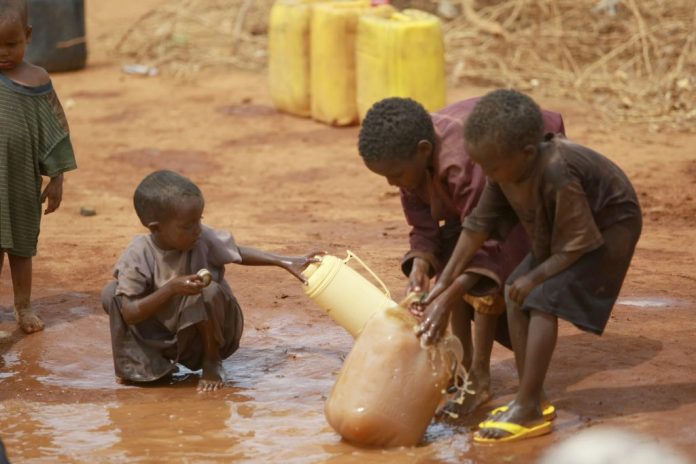By Sinead Lehane*
Achieving Sustainable Development Goal (SDG) 6 to ensure the availability and sustainable management of water and sanitation for all by 2030 requires a whole-of-water-cycle approach to water management. Efforts have historically focused on how we can provide households with water supply and access to sanitation, however without looking at all the components of Water, Sanitation and Hygiene (WASH), particularly the often overlooked management of wastewater, meeting SDG 6 will prove unattainable.
SDG target 6.3 seeks to improve water quality by reducing pollution, eliminating dumping and minimising the release of hazardous chemicals and materials, halving the proportion of untreated wastewater and substantially increasing recycling and safe re-use globally by 2030. Besides assisting to achieve SDG 6, progress towards target 6.3 will also help achieve the SDGs on health and well-being (SDG 3), affordable and clean energy (SDG 7), sustainable cities and communities (SDG 11), life below water (SDG 14), and life on land (SDG 15), among others.
Despite the opportunities wastewater presents, the management of this resource is often neglected when systems to address water and sanitation needs are developed and implemented. Over 80 percent of the wastewater generated globally by society flows back into the ecosystem without being treated or reused. As populations grow and become increasingly urban the amount of wastewater generated will increase with it. This presents a challenge in managing the burden on our ecosystems and human health, and an opportunity to capitalise on the potential of wastewater as a valuable resource.
The burden of untreated waste
As with access to water supply and sanitation facilities, the burden of untreated wastewater falls disproportionately on the poor. It is estimated that high-income countries treat an average of 70 percent of the wastewater they generate, while only 8 percent of the wastewater generated in low-income countries is treated. Faecal sludge, generated from a lack of sewered sanitation systems, presents a significant negative environmental and public health risk for communities. Without proper management, faecal sludge accumulates in poorly designed pits and is either discharged directly into waterways or via seepage from leaking pits/septics, unsanitary dumping sites and wastelands.
The presence of faecal waste in the environment increases the risk of disease transmission in communities. Human excreta can contain a number of pathogens that remain highly infectious for long periods of time when introduced to the environment. When untreated wastewater is discharged into the environment it can contaminate drinking water supplies, leading to serious infection and disease outbreak. Diarrhoea, schistosomiasis and intestinal worms, are just some of the diseases associated with excreta contamination.
Integrated Water Management (IWM) approach to waste
To meet the growing demand for water, and reduce the burden of pollution on both human health and our ecosystems, achieving SDG target 6.3 and halving the proportion of untreated wastewater is necessary. Using tools such as SuSanA’s recently developed Shit Flow Diagram graphic generator can assist with identifying at which point the management of waste from households becomes unsafe, and the path required for the safe reuse and disposal of faecal wastes. Having the ability to identify where, how and how much waste is being managed safely or unsafely provides the data we need to develop and adjust management systems to effectively reduce the amount of untreated wastewater entering the environment. These tools and frameworks can provide the processes and insights we need to stimulate and manage change within the water sector and beyond to address the growing challenges related to wastewater.
Wastewater management, as with all components of Water, Sanitation and Hygiene (WASH), is only one piece of the puzzle in achieving SDG 6. To ensure an integrated approach to water management these processes must be part of a broader system that encourages the coordinated development and management of WASH programming within the wider context of natural resource management to maximise economic, social and ecological values in an equitable and sustainable manner.
Waste management and WASH – a need to build capacity in IWM
Building capacity to support the sustainable and inclusive development of WASH programming is necessary to move beyond a focus on access to sanitation and water towards management systems that take into account the entire water cycle, including how we interact with and manage our waste. Taking an Integrated Water Management (IWM) approach to this process can assist contextualise the complex challenges we are confronted with and stimulate the coordination and participation of stakeholders to develop solutions.
Recognising the vital importance of IWM in WASH programming, the International WaterCentre (IWC) has developed an eight-week Introduction to WASH for Development online course. It combines real-world experience in IWM and WASH with expert knowledge, to deliver an engaging course that addresses the key intersectoral issues around WASH and shares the lessons and evidence-based strategies to strengthen the enabling environment and support inclusive planning, design and implementation of WASH programmes.
Over the eight weeks participants will be introduced to the fundamental principles of WASH, delving into the challenges, opportunities and strategies for WASH in development programs through a series of topics that include: environmental health, sanitation, water supply, WASH services, behaviour change, hygiene promotion and the enabling environment.








